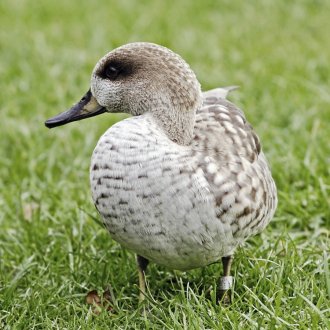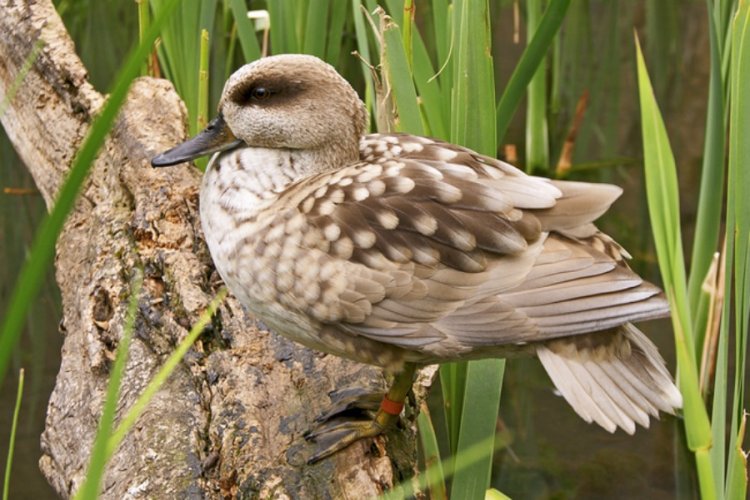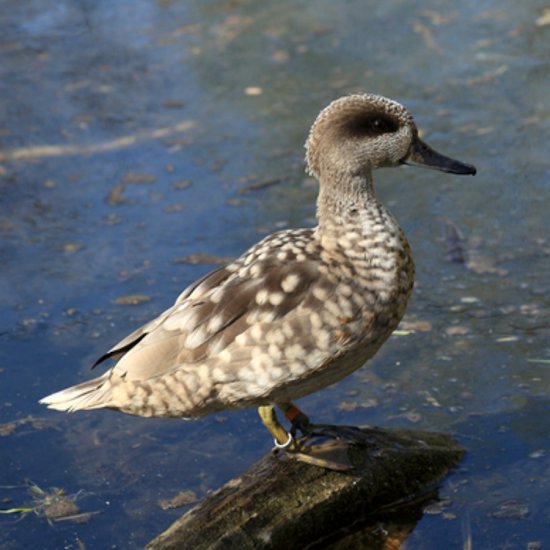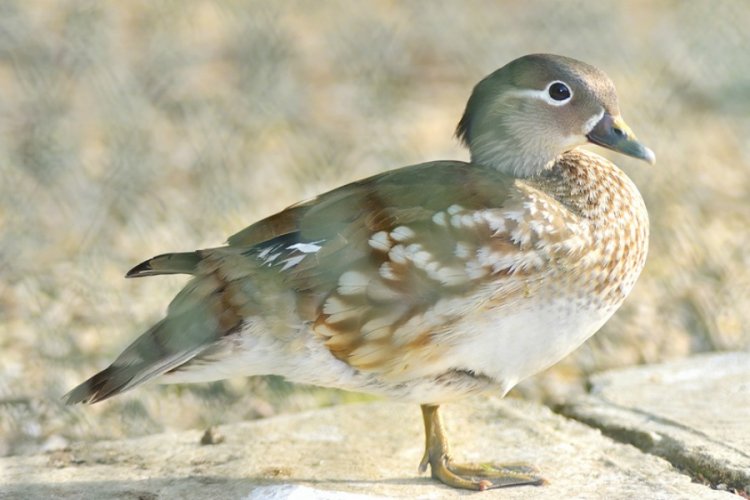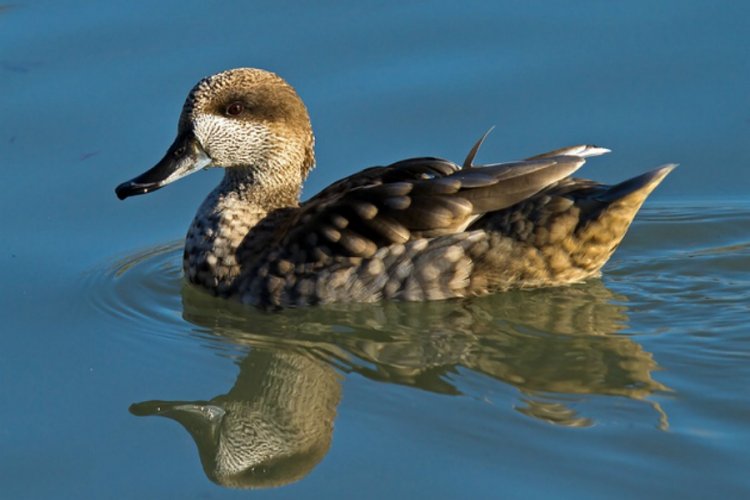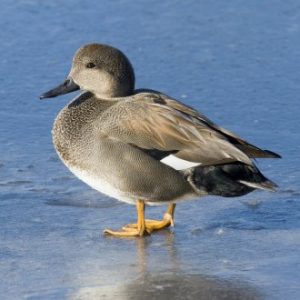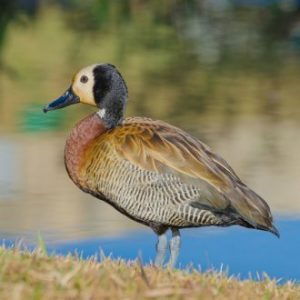Marble Teal Ducks, Marmaronetta angustirostris, are elegantly colored waterfowl with creamy white and gray-fawn coloring. These ducks have large heads that appear larger, with a flat top when displaying. Heads have a light stripe along the sides under the eyes, which is attractively set off by a dark black bill. Feet and legs are a gray color. The white spotting over the shoulders and back are particularly alluring. It is probably these white spots, which look like ‘marbles’ that led to this duck’s name.
Males and females can be quite similar in appearance, but males can be distinguished by a darker brown coloring over the eye and a more dramatic cresting on the head. Neither sex has a colored wing speculum.
Marble Teal Ducks make great additions to an avian collection – they are easy to care for, adaptable, and get along well with other species.
Range: Marble Teal Ducks could originally be found in large numbers throughout the Mediterranean region and the middle east. At this point though, they are only found in a few sites in southern Spain, northwestern Africa, Israel, as well as some small groups reported in Turkey, Armenia, northwestern India, and western China. The most important population is in the Shadegan Marshes in southern Iraq.
Habitat: Marble Teal Ducks inhabit marshes, swamps, wetlands, lakes and ponds, and sometimes brackish bodies of calm water as well.
Status in the Wild: Marble Teal Ducks are classified as a Vulnerable species by the IUCN.
Status in Aviculture: Although not extremely common in aviculture, Marble Teal Ducks are easy to care for and very rewarding to raise.
Breeding: The breeding season of the Marble Teal Duck is in spring. Males perform interesting and entertaining courtship displays, after which nests are constructed on the ground. Marble Teal Ducks often make use of nest boxes if placed in some natural covering. Clutch size is usually 8-10 eggs. The incubation of 25 days, is done by the female. Ducklings are usually strong and hardy and can be raised successfully without much fuss.
Lifespan: Marble Teal Ducks can be expected to live 20-30 years.
Size: Marble Teal Ducks measure between 12.5 and 16 inches in length. They have a wingspan of 22 – 24 inches.
Housing Requirements: Marble Teal Ducks do well in mixed-species collections, and are uncomplicated to raise in captivity. They are native to warm climates though and thus will need some sort of heat and winter protection if kept in areas with cold winters. They also tend to be a bit nervous and flighty and can be timid when interacting with other species of waterfowl. They would probably do best if housed with other smaller species of tropical ducks. Although Marble Teal Ducks do not need a very large aviary or enclosure, plenty of cover should be provided for their comfort.
Diet: Marble Teal Ducks feed on a diverse wild diet consisting of insects, seeds, grasses, and aquatic plants. They feed in shallow water by dabbling as well as over land. An 18% protein commercial duck or waterfowl diet would be appropriate for feeding these birds in captivity. Additional greens, access to pasture, and insects such as mealworms would also help in keeping a vibrantly healthy flock.
Miscellaneous Notes: Waterfowl classifications seem to be always challenging ornithologists – Marble Teal Ducks were just reclassified as Pochards or as Diving Ducks rather than Dabbling Ducks due to their breeding display. They don’t dive much to find food though – they usually dive when threatened or startled.

